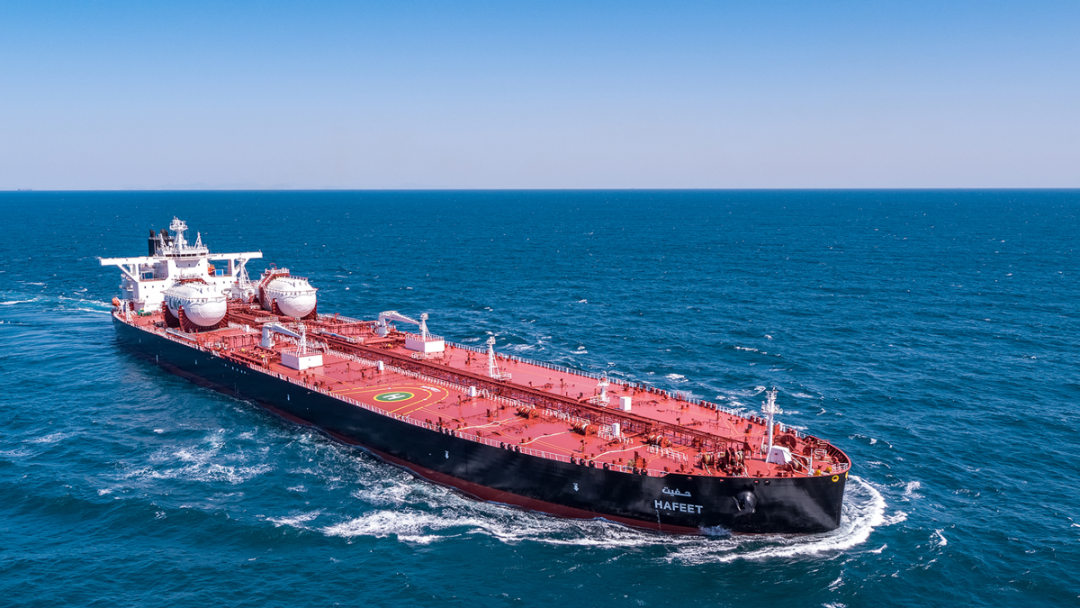|
In the current shipping market, the outlook for very large tanker (VLCC) daily rates is compelling, with analysts showing strong optimism in their forecasts of potential increases.
According to an analysis by Clarksons Securities, VLCC rents are expected to climb to a high of $100,000 per day if OPEC+ countries successfully implement their production increase plans.

Clarkson Securities stressed that the news of Saudi Arabia's plan to increase production is a big positive for tankers, and OPEC+ is expected to increase crude oil production by about 200,000 barrels per day per month in the coming year, and the market demand for VLCCs may increase by five ships per month.
This change means that VLCCs, which play an important role in transporting Middle Eastern crude oil, will face greater market pressure. However, it remains uncertain whether all OPEC+ members will contribute to the increase.
Clarkson Securities said that if Saudi Arabia alone increases production by 83,000 b/d per month, the market will still generate demand for the two additional VLCCs, which means that the total market demand could increase by 24 ships in the coming year.
The agency believes that the increase in demand could send VLCC spot prices up by $20,000/day to around $65,000/day. In a more optimistic scenario, if OPEC+ countries increase production across the board, daily rents could even approach a high of $100,000 per day.
At the same time, another analyst, Signal Group, also expects VLCC daily rents to rise as available tonnage begins to dwindle.
Recently, the relationship between supply and demand in the market has begun to show signs of tension. Signal Group notes that the number of available vessels is already below the annual average as vessel utilization has increased. The "gradual digestion" of supply is undoubtedly one of the important factors affecting the market. The decline in vessel availability has led to increased competition in the market, and daily rates are likely to rise accordingly.
Heading into the winter months, there is usually a significant increase in demand. Signal Group specifically mentioned that with the arrival of the cold season in the northern hemisphere, crude oil demand will increase to meet heating and industrial demand. This seasonal demand in the market, coupled with the gradual tightening of vessel supply, could push up daily rates even more.
At the end of September, VLCC daily rents from the Middle East to China had recovered, suggesting that the market was emerging from the doldrums and showing signs of recovery. Especially with the traditional peak season, the market demand for crude oil transportation is increasing. Monthly crude shipments from the Middle East to China increased significantly between August and September, according to Signal Group, highlighting China's aggressive efforts to boost energy reserves and refining capacity.
As the world's largest importer of crude oil, China's demand dynamics have a profound impact on the VLCC market. Continued strong demand in China will continue to put upward pressure on daily rents. Against this backdrop, market participants must pay close attention to OPEC+ decisions and changes in the Chinese market, as these factors will directly affect the future direction of the shipping market.
Overall, the future of VLCC daily rents is uncertain, but the fundamentals of the market are showing strong signs of recovery. As OPEC+'s production increase plan is gradually implemented, the tight supply-demand relationship may drive up daily rents. Shipping companies and investors must pay close attention to these developments in order to capitalize on market opportunities for the upcoming shipping season. In this market full of opportunities and challenges, flexibility and forward-looking strategies will be the key to success.
https://www.cnss.com.cn/html/hygc/20240930/354707.html
|